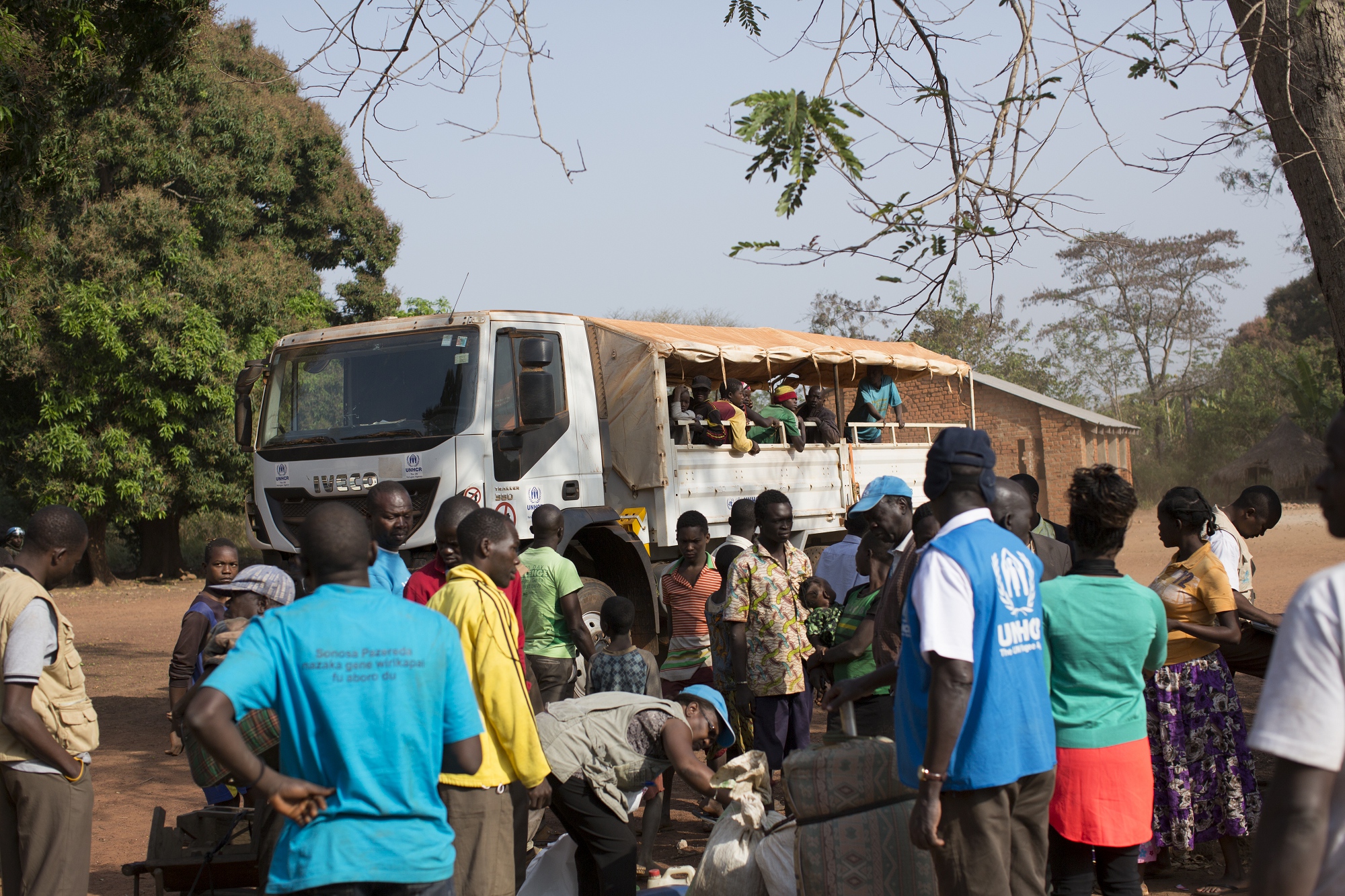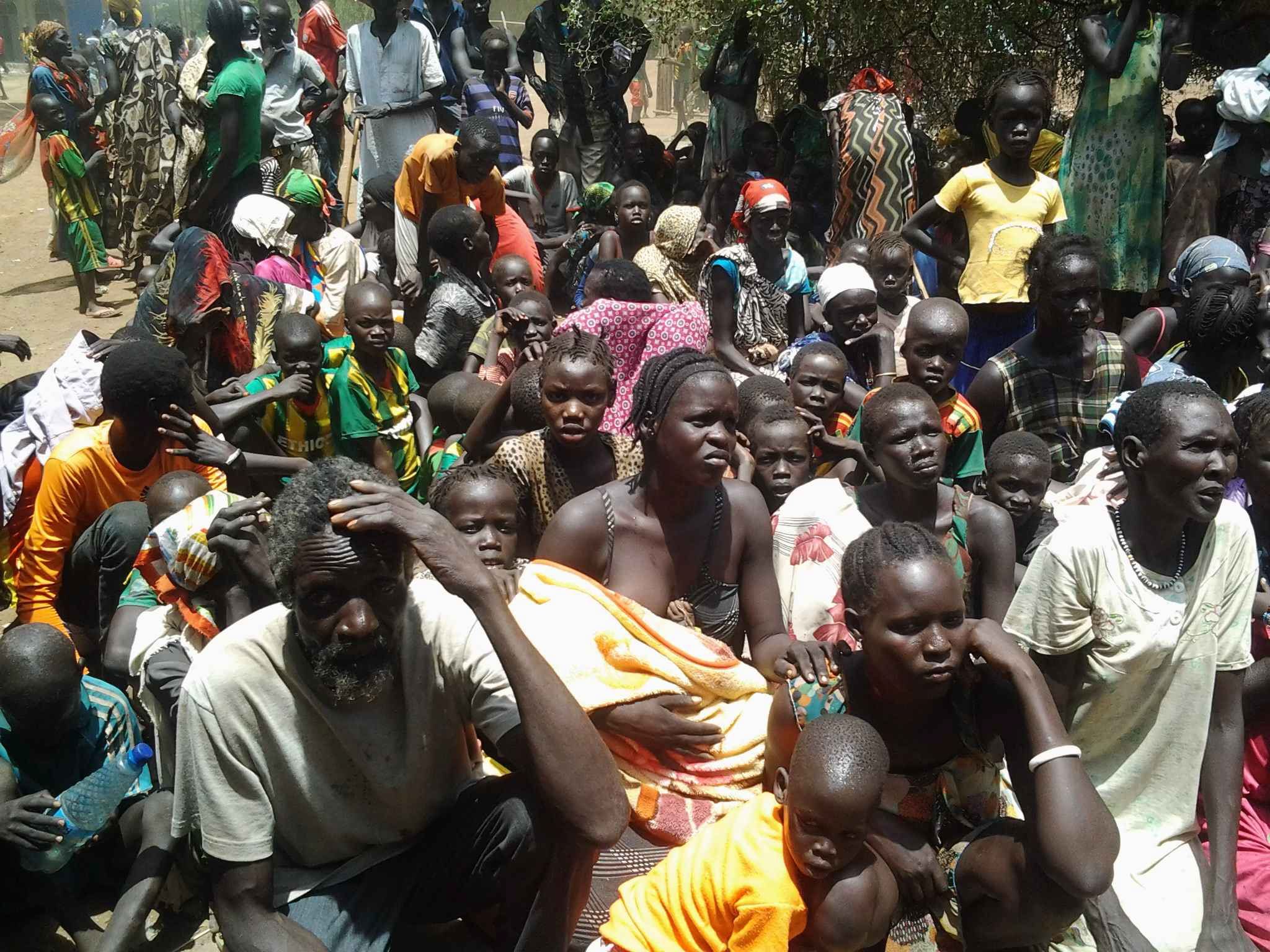As rains ebb in South Sudan, refugee flows are expected to rise
As rains ebb in South Sudan, refugee flows are expected to rise

JUBA, South Sudan, September 12 (UNHCR) - When the seasonal rains begin to subside, and roads become easier to travel, South Sudan could see an influx of new refugees from Sudan's Blue Nile and Southern Kordofan states.
The number of new arrivals could reach 30,000 by year's end, said George Okoth-Obbo, who directs UNHCR's Africa Bureau. Okoth-Obbo, speaking at a press briefing in Juba after a recent to four refugee camps near the country's northern border, called on humanitarian organizations to start planning for a surge in refugee arrivals in the coming months.
The numbers are already starting to climb. Since Monday, for example, more than 500 people have crossed the border from South Kordofan and made their way to Yida camp - up from an average of 70 people per day in late August.
Large numbers of refugees have been fleeing violence and food insecurity in Sudan's Blue Nile and Southern Kordofan states, where international humanitarian agencies have had limited to no access for months. Over 170,000 have sought protection in South Sudan since June 2011.
Okoth-Obbo surveyed the situation last week during a visit to four camps - Yusuf Batil, Gendrassa, Doro and Yida. He was accompanied by Stanlake Samkange, regional director for Eastern and Central Africa at the World Food Programme (WFP).
Okoth-Obbo and Samkange met with children under the age of five as well as pregnant and lactating mothers who are receiving supplemental food rations to prevent malnutrition. They also saw how community health and hygiene workers are moving throughout camps to refer refugees to medical services and teach improved hygiene practices to curb the spread of diseases.
"We have now seen with our own eyes how our efforts are saving lives and ensuring the safety of vulnerable refugees who have survived heart-wrenching and life-threatening situations but this is not 'mission accomplished'," Okoth-Obbo told reporters afterwards. "We still have a lot of work ahead of us to improve the health and well-being of refugees in South Sudan."
Samkange added that an extraordinary response is required by humanitarian actors in South Sudan, where refugees are arriving severely malnourished. "Refugees are arriving in very poor condition because of the distances they had to travel and the urgency with which they fled," he said.
During their visits to the camps, Okoth-Obbo and Samkange observed how UNHCR, WFP and other humanitarian agencies are working to meet the enormous needs of the refugees and to reverse alarming health and nutrition rates in the camp.
At a time when the rainy season is exacerbating the already poor health of the refugees, UNHCR is distributing relief items such as plastic sheeting, blankets, sleeping mats and mosquito nets to keep them safe, warm and dry.
Okoth-Obbo cautioned that despite the massive humanitarian response, the situation remains precarious. He said relief agencies must continue to work together to reverse unacceptably high rates of death and illness and improve access to clean water.
The logistical challenges in South Sudan are among the most difficult in the world. With many roads likely to remain flooded and impassable through the end of the year, humanitarian agencies like the UN refugee agency must airlift in their life-saving supplies and staff - a complex and costly undertaking.
Samkange added, "We are using all means available, including boats and aircraft to move food into the camps. We are pulling out all the stops to ensure that those in need get the food assistance they require."
Meanwhile, heavy rains in Maban County over the past few days have made access to Doro, Yusuf Batil and Gendrassa camps more difficult. Even so, UNHCR and a UNOPS (UN Office for Project Services) assessment team managed to reach the three camps, which collectively host about 89,500 refugees.
"We are intensifying efforts by calling in extra crews from private companies to complement UNOPS' work on the road" from Jamam to Gendrassa, said Mireille Girard, the refugee agency's representative for South Sudan. "With the current flooding in the Bunj area, these engineering teams will be overstretched in the coming weeks to secure vital humanitarian access and complete the all-important work of moving refugees to drier ground."
By Kathryn Mahoney in Juba, South Sudan








